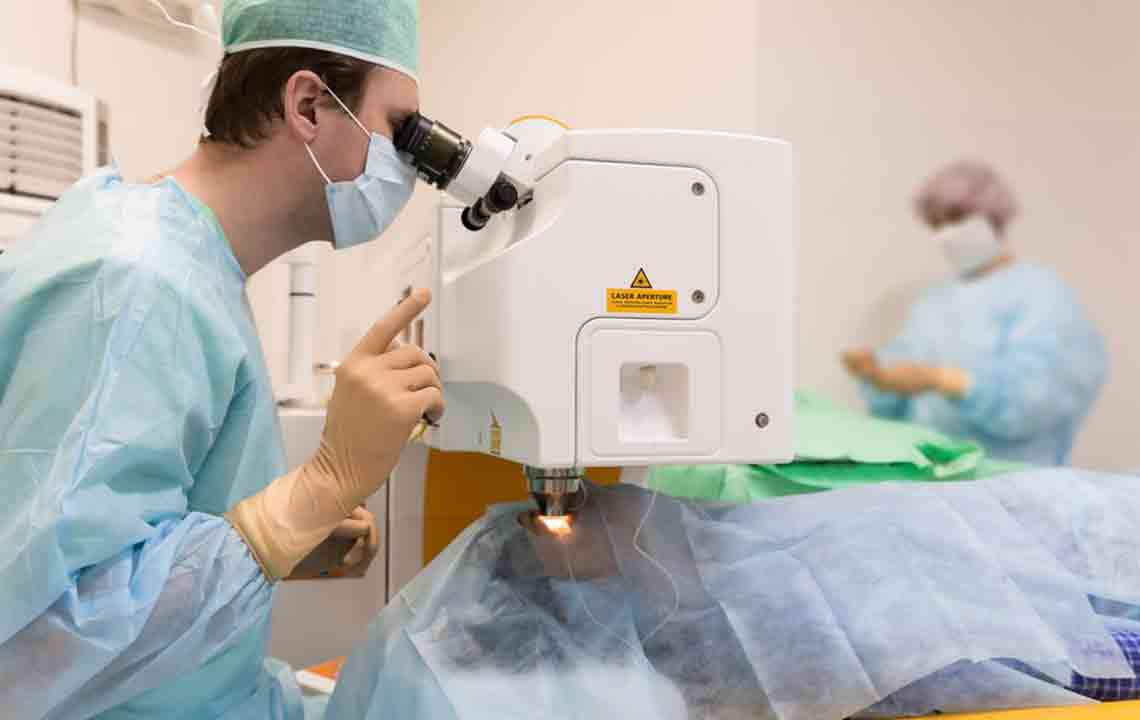LASIK Eye Surgery – Types, Procedure, and Costs
LASIK, short for laser-assisted in situ keratomileusis, is one of the most commonly performed vision corrections that reshapes the cornea using laser technology. This procedure uses a speci al type of laser to change the shape of the cornea, which can further improve blurred vision and reduce the need for glasses or contact lenses. It may be used to correct nearsightedness (myopia), farsightedness (hyperopia), and astigmatism (focus of near and distant vision).

Types of LASIK surgery
There are a few common types of LASIK eye surgery options that one can look into.
- LASIK
This is the most common type of eye surgery that people opt for. Here, the surgeon creates a hinged flap in the cornea using a sterile blade. Then, a fine laser is used to remove thin layers of the cornea. This procedure is quick and painless, often characterised as outpatient. It makes use of localised anaesthesia, which is administered in the form of eye drops. - Intra LASIK
Similar to the above procedure , here , the surgeon uses the laser instead of the blade to cut and reshape the cornea. - Wavefront LASIK
Those looking to get the most advanced form of LASIK can opt for wavefront surgery. In this procedure, the doctor begins by producing a three-dimensional scan of the cornea to allow for a more precise surgical procedure and to improve the chances of 20/20 vision.
Other vision correction surgeries also include:
- PRK
Similar to LASIK, photorefractive keratectomy (PRK) involves reshaping the cornea as well. Here, the top layer of the cornea is removed, and a pulsing ultraviolet laser is used on the corneal surface to achieve the desired shape. The cornea eventually grows back over these corrected layers. This procedure is ideal for those with an extremely thin cornea , as it reduces the risk of corneal damage and other complications. - EVO Vision ICL
EVO Vision ICL is a relatively new procedure recommended for those who are not considered suitable candidates for LASIK or PRK. Here, an EVO lens is implanted to correct one’s vision , instead of reshaping the existing structure. Based on the doctor’s recommendations, the lens can be removed at any time. This procedure typically requires about 20 to 30 minutes to complete.
Lasik surgery procedure
Before the procedure
Before recommending LASIK surgery, the doctor generally begins by determining if one is a good candidate for the procedure . A “ suitable ” candidate is described as someone who is above the age of 18, in good overall health, does not suffer from any eye disease such as glaucoma or cataracts, has had no notable changes to eyesight in the past year, and has an eye shape that is conducive to surgery.
At this time, the doctor will also evaluate factors such as the size of the pupi l, the shape and thickness of the cornea, refractive errors, moisture levels in the eye, the condition of the retina, and any other eye conditions.
During the procedure
The surgery begins with the administration of local anesthesia. Once the eyes have been numbed, they are positioned under the laser and held open using a lid speculum instrument. Then, a thin flap is created using a microkeratome, and the flap is peeled back. The surgeon then uses the computer to adjust the laser. Following this, the surgeon will look into a microscope and send light pulses into the cornea to reshape it and correct the refractive index.
After the procedure
Once the procedure is completed, the surgeon may recommend that the patient take some time out and rest. The surgery may have temporary effects like blurring of the vision, eye pressure, dry eyes, or a burning or itching sensation. A follow-up appointment will be scheduled a few days later to check the progress.
Post-LASIK healing is generally quick and occurs within a few days of the surgery. Most people who undergo this procedure do not need glasses or contact lenses.
LASIK eye surgery costs in Brazil
The price of the LASIK procedure depends on the city, clinic, technology used, and the surgeon performing the procedure. Based on these factors, the average cost for this surgery may range anywhere between R$3,000 and R$10,000 per eye. Those opting for specialised treatments like Contoura may expect to pay a little more, with the average cost ranging between R$10,750 and R$12,500 per eye.
Since LASIK is known to be an elective procedure, it may not be covered by the Sistema Único de Saúde (Unified Health System) in Brazil. That said, many private insurance companies offer coverage for LASIK procedures for those with a specified refractive index. It is advisable to carefully look at one’s insurance policy to check for coverage and eligibility details, as these may differ from one company to another .
The cost of LASIK surgery in Brazil is comparatively cheaper than in other countries. As a result, it often attracts healthcare tourists. Those considering visiting the country to undergo this procedure must note that the overall price and quality of the treatment can differ from clinic to clinic. Before scheduling an appointment, conducting thorough research and consulting with a reputable surgeon is imperative, as it can help find the right one suitable for the requirements. Additionally, if one wants to know how much the overall cost of LASIK eye surgery is in Brazil, they should assess the surgery’s suitability and account for associated costs, including travel, food, and accommodation. This will provide a better understanding of the overall price of one’s vision correction treatment.




